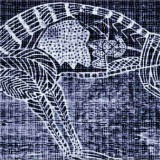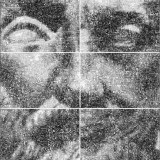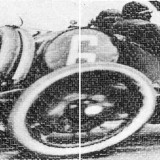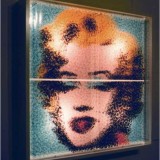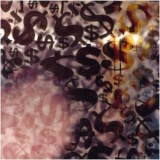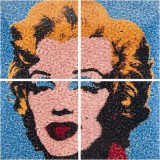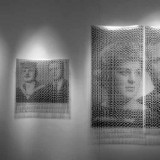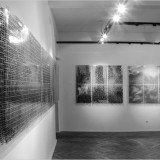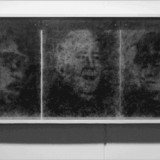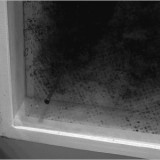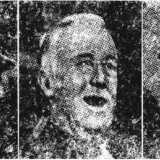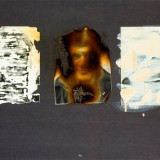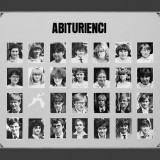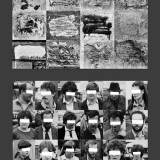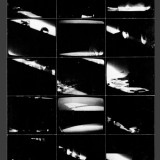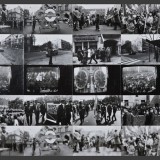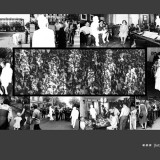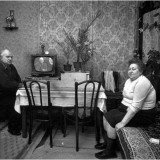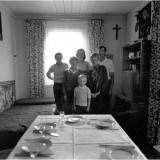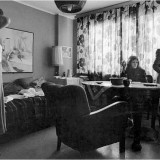Krzysztof Cichosz
Born in 1955. Between the years 1985-89 he studied in the Collage of Photography in Warsaw. He undertook MA degree studies at the Academy of Fine Arts (now Art University) in Poznañ (1999-2002). He currently works as a professor in the Film School in £ód¼. In 1983 he founded and the FF Gallery (Forum Forografii – Photography Forum) in £ód¼ which he ran until 2008. He was a member of the £ód¼ Association of Photographers and since 1989 the Photographers’ Union. He was also a curator of exhibitions in Poland and abroad (Change of guards [together with K. Jurecki], 1991; Constellation 1983, Photography and space 1998; Around the decade. Polish photography of the 90s, 2002; £ód¼ of Photography 2003/2004). His works are in the collections of the: Art Museum in £ód¼, National Museum in Wroc³aw, the Museum of the History of the City of £ód¼, the Musée L`Elysée in Lausanne, The Art Collection of the World Bank in Washinton DC, Exchange Gallery in £ód¼ and the Small Gallery of the Photographers’ Union-CCA. During his artistic path Krzysztof Cichosz moved from documentary photography showing images of Poland from the beginning of the 80s (The Certificate of Awareness 1978-81) inspired by the works by Zofia Rydet (Sociological Register 1978-1990) to the formula of an artwork which crossed into the status of a classic photograph. He showed (from his own perspective) the interiors of houses and their inhabitants, documenting their natural behaviour and the interior décor, which partly makes his works different from typological and hierarchical works by Rydet.
Since the 80s Krzysztof Cichosz has belonged with the most intriguing artists in £ód¼, who based on individually developed self-awareness, has worked on a unique photographic technique in which there is a space also for other kinds of activity – above all graphics and drawing described by the name photo-installation. Krzysztof Cichosz in the second half of the 80s consciously broke with traditionally understood photography which referred to the categories of the sociological photography, in favour of participating in the newest visual changes. Earlier in the series After-reportage (1981-85) he became interested in the actions which aimed at crossing classically interpreted photography.
In the beginning of the 80s he turned towards experiment, conducted in the beginning based on reportage (After-reportage,1981-85). The ideological dimension of the works from this series lays in patriotism. It refers to photos from the now famous Hunger March of women from £ód¼, devoted to a killed worker (Janek Wi¶niewski). What attracts the attention is a delicate note of irony included in
In 1988 after long attempts the artist worked out a new formula for his creative work. These are 3D projects, based on the transparency of the material, revealing subsequent layers which as a result of possibilities within the technique itself, gives them various possible interpretations. This way a “live structure” emerges, which acts with its quivering image. In a large zoom, the detail of his works is a sign or a symbolic element, because the artist uses, which is worth mentioning, quotations. He is able to reach a level of originality because of a specific technique in which the works are made. He does not use the quotation to weaken the meaning of ancient iconic messages, but to show their changeability or vagueness, out of which also a cultural strenght may result.
It is also worth mentioning that the art works do not fight with, do not question and do not destroy the cultural heritage, although they use the category of a quotation. Such a measure in the case of some American artists who attacked classic photographic modernism in the beginning of the 80s was described as “re-photographing”. This method however was exhausted, at least in the USA. Cichosz chose another, more reckless road – he referred to the technique of a hologram, as a certain idea which manifests lack of materiality and the 3D aspect of the photographic image. He aims at the restoration of the symbol, which in his understanding is a visual sign which contains a specified contents, not a magic revelation. The essence and originality of the photo-installations by Cichosz is in the fact that his works are close to a text, which they will never become.
In 2002 there was an exhibition Hybrid portraits during which the artist presented unreal portraits of the randomly composed fragments of faces of nine ancient philosophers, generated by a computer. An important role as in all works of that type, is played by a raster assembled on the code of a word processing computer software.
His photos, which despite the non-conventional form, are fully based on the traditional way of exposure and since 21st century have become computer prints are often especially lit. through his work Cichosz expresses various problems which perplex him; dealing with the essence of art (Hommage a art II, 1988-2001), history of painting as history of war (Bryk, 1991) the history of photography (Photography 1989; For Modernists 2002) and less often politics (The Grand Three 1989).
He uses a computer as a tool which he dominates in the sense of using its possibilities of giving an aesthetic shape. He has also created works in colour Marylin, for Andy, for America (1998), Executed (2001). The value of Cichosz’s works is also in the fact that it’s difficult to define their theoretical background. Are they a symptom of modernism, or just the opposite – postmodernism? Undoubtedly they emerged as a result of a fatigue with neo-avant-garde exhaustion in the beginning of the 80s. But it does not prove that they are postmodern, rather they are situated on the border of epochs and styles because postmodernism has its aesthetics, or rather at least a few culture-producing forms. The artist by rationalising history shows its changeability and fluidity. Its image, despite being constructed by Cichosz depends on the viewer who each time in an infinite way, receives its signals and fragments. We cannot get to know the whole, it is hidden behind the next layer. Perhaps it exists, but it is located outside of our perception. These are only some of the dilemmas revealed by the photo-installations by the artist.
Krzysztof Jurecki
wiêcej na stornie artysty


